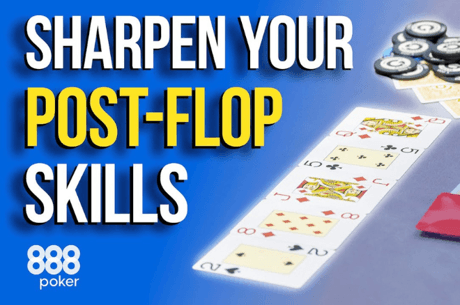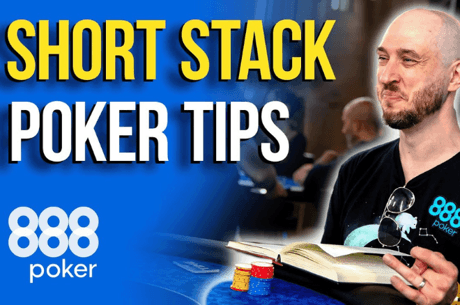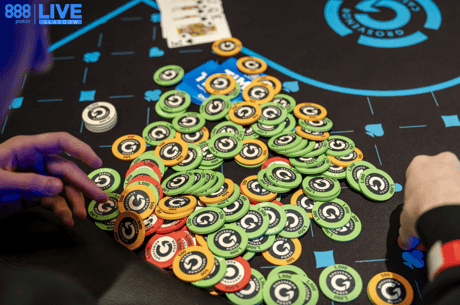From the Blinds: Replace 'Defending' With 'Attacking' for Higher Win Rates

Defending the blinds is a timeless poker strategy topic. Should we even bother to defend our blinds? Why? When? How?
A quick search online reveals many articles and videos with widely varying advice. Some experts advise you to defend frequently against apparent blind thieves. Others recommend that you avoid getting sucked into a pot where you'll be out of position on every postflop betting round.
From the latter camp comes my favorite line about blind defense. In her book Decide to Play Great Poker, Annie Duke offers this advice to players who consider defending their blinds a point of pride: "You know what? Let the dick-measurers measure dicks. You do the correct thing and fold hands that don't compete against the raiser's range."
Wrong Words Lead to Wrong First Impressions
First impressions matter in how we interpret what follows. Words like "defend" and "defense" are inherently passive. The unconscious mind may see these words in the title or initial paragraph of an article and adopt a strictly passive interpretation without you being aware of its effect. This is a form of the "thin-slicing" as described by Malcolm Gladwell in Blink.
Reading that you should "defend" your blinds at least some of the time induces you to call too much without a good plan. To be sure, the details of strategy articles often refer to reraising as an important part of the strategy, but too often those details appear only after the brain has filed away a passive approach as its key takeaway.
When you call a raise from one of the blinds, you've set up the worst possible situation — putting extra chips into the pot from out of position without much definition around the aggressor's range. Most hands miss most flops, leaving you to check-fold often against aggressive players. You cannot win over the long run this way.
Make Counter-Attacking Your First Option
When the button or cutoff seat is raising with a wide range against your big blind, consider counter-attacking as your dominant strategy.
Your first goal is to make them fold the weakest part of their range. You make money without suffering the disadvantage of acting first for the rest of the hand. In a game with no rake when there is no flop, you get a couple extra bucks for ending the hand immediately.
Your second goal is to counter-attack with a strong enough range that you have decent equity when your three-bet gets called. With the betting initiative, you'll win often with continuation bets on favorable flop textures. Other flops will connect with your hand well enough to bet for additional value.
And your third goal is to send a "don't tread on me" message to the LAGs (i.e., loose-aggressive players) on the button and cutoff seats. A hot-and-cold approach of reraising or folding is one way to accomplish these goals. Every player should make his or her own adjustments, always keeping the calling range as small as possible.
Math Validates Aggression
Say you are at a live $2/$5 cash game, with effective stacks of $500. Everyone folds to the button, who raises to $20. The small blind also folds. Now there is $27 in the pot. You want to counter-attack from the big blind by reraising to $70. What percentage of his range does the button have to fold for your play to be profitable?
Here's a chart giving an idea of how a "hot-and-cold" strategy of three-betting or folding might look:

At the extreme where you always lose when called, you are only profitable if the button folds over 71 percent of the time. In reality your equity when called depends on the villain's calling range. Here is how often the villain must fold to your three-bet for you to be profitable against various calling ranges:
| Villain's Calling Range | Your Equity | How Often Must Villain Fold? |
|---|---|---|
| JJ+, AQS+, AKo (top 3%) | 32.4% | > 44% |
| TT+, ATs+, KJs+, QJs, AQo+ (6%) | 39.0% | > 31% |
| 88+, A9s+, KTs+, QTs+, AQo+, KQo (9%) | 43.1% | > 19% |
| 77+, A7s+, KTs+, QTs+, J9s+, T9s, 98s, AJo, KQo (12%) | 45.5% | > 10% |
Contrast this with a defense-oriented approach, in which you suffer the triple deficit of (1) no fold equity, (2) no betting initiative, and (3) positional disadvantage on every subsequent betting round.
Conclusion
Counter-attacking with a reasonably strong range will always be profitable against villains who widen their ranges in the blind stealing positions.
Once you remove the words "defend" and "defense" from your poker vocabulary, your win rate from the blinds against LAG-gy late-position thieves will increase immediately.
David Bass mostly plays in live no-limit hold’em cash games and has been writing about poker since 2012. You can follow him on Twitter @KKingDavidPoker or enjoy his blog, They Always Have It, at https://kkingdavid.com/.










